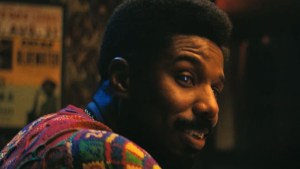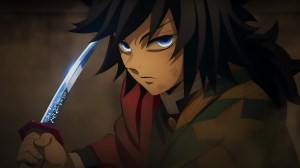Rolling a 20 on a 20-sided die wasn’t always a guaranteed hit in Dungeons & Dragons. There’s no greater thrill in Dungeons & Dragons than rolling a “Natural 20” on a 20-sided die during a critical moment in combat. Not only is the “Nat 20” a guaranteed hit, it also allows players to roll twice as many damage dice when calculating damage. However, longtime D&D players know that rolling a 20 didn’t always equate to an automatic and critical hit. In fact, critical hits were at one point considered “offensive” to the fundamental nature of the game.
Videos by ComicBook.com
In Dragon #16, D&D co-creator Gary Gygax spoke about the then homebrew rule of allowing critical hits on a natural 20 while discussing combat systems derived from Dungeons & Dragons‘ original rule set. “The ‘critical hit’ or ‘double damage’ on a ‘to hit’ die roll of 20 is particularly offensive to the precepts of D&D,” he wrote. In the same article, he argued that adding Critical Hits “perverted” D&D’s entire game system and possibly even ruined the game. Clearly, Gygax was not a fan of Critical Hits in D&D – at least not as the game was originally presented.
Gygax was vehemently opposed to the concept of the critical hit because of how Hit Points and damage worked in the original version of Dungeons & Dragons. Under standard rules, a character dies immediately when they hit 0 hit points. Even with optional rules mentioned in the game, a player died as soon as they failed a single death throw, which they had to make when they hit 0 hit points, whenever they took damage, AND every turn after they fell unconscious. So – a Critical Hit had the potential to be an instant kill, even if the player had plenty of hit points before they took the unlucky hit.
Keeping this in mind, Gygax believed that allowing Critical Hits took away the use of judgement when playing. While there were monsters capable of killing a player in a single hit in the original Dungeons & Dragons, allowing Critical Hits meant that a single roll of the dice could make a mundane encounter much more deadly. “If everything that is faced has an excellent chance to kill characters, they will surely die before long,” Gygax explained.
It wasn’t until Advanced Dungeons & Dragons – Second Edition that D&D finally provided options for rewarding a roll of Natural 20, but even then they were considered optional rules. It wasn’t until Dungeons & Dragons – Third Edition that a “Natural 20” was considered an automatic hit, and even then, players had to “confirm” the critical by making a second attack roll. Dungeons & Dragons – Fourth Edition took this one step further by stating that a Natural 20 was an automatic hit, and that if the 20 + the character’s attack modifiers were enough to hit a monster normally, it also did critical damage. It wasn’t until the current ruleset that a Natural 20 was considered an automatic “critical hit,” ironically the very thing that Gygax protested way back in 1978.
Of course, many Dungeons & Dragons still misinterpret what a Natural 20 means. Players only receive the “critical” benefit of a Nat 20 in combat or when making a death saving throw. The ruleset specifically notes that rolling a 20 on a skill check does not guarantee success nor does it mean that they get an extra bonus of some kind. Too often do players think that rolling a natural 20 on a Persuasion check automatically means that their hated enemy will suddenly have a change of heart, decide that their oath of vengeance should be forgotten, and also offer the player a majority share of all the treasure they’ve accumulated in their castle stronghold.
Still, it’s interesting to see that the concept of a “Nat 20” has come from an anathema to the concepts of Dungeons & Dragons to a fundamental and inseparable part of the gameplay. It’s one more way that Dungeons & Dragons has changed over the last 45 years.
Tell us about your favorite “Critical Hit” in the comment section or find me on Twitter at @CHofferCBus to chat all things D&D!









